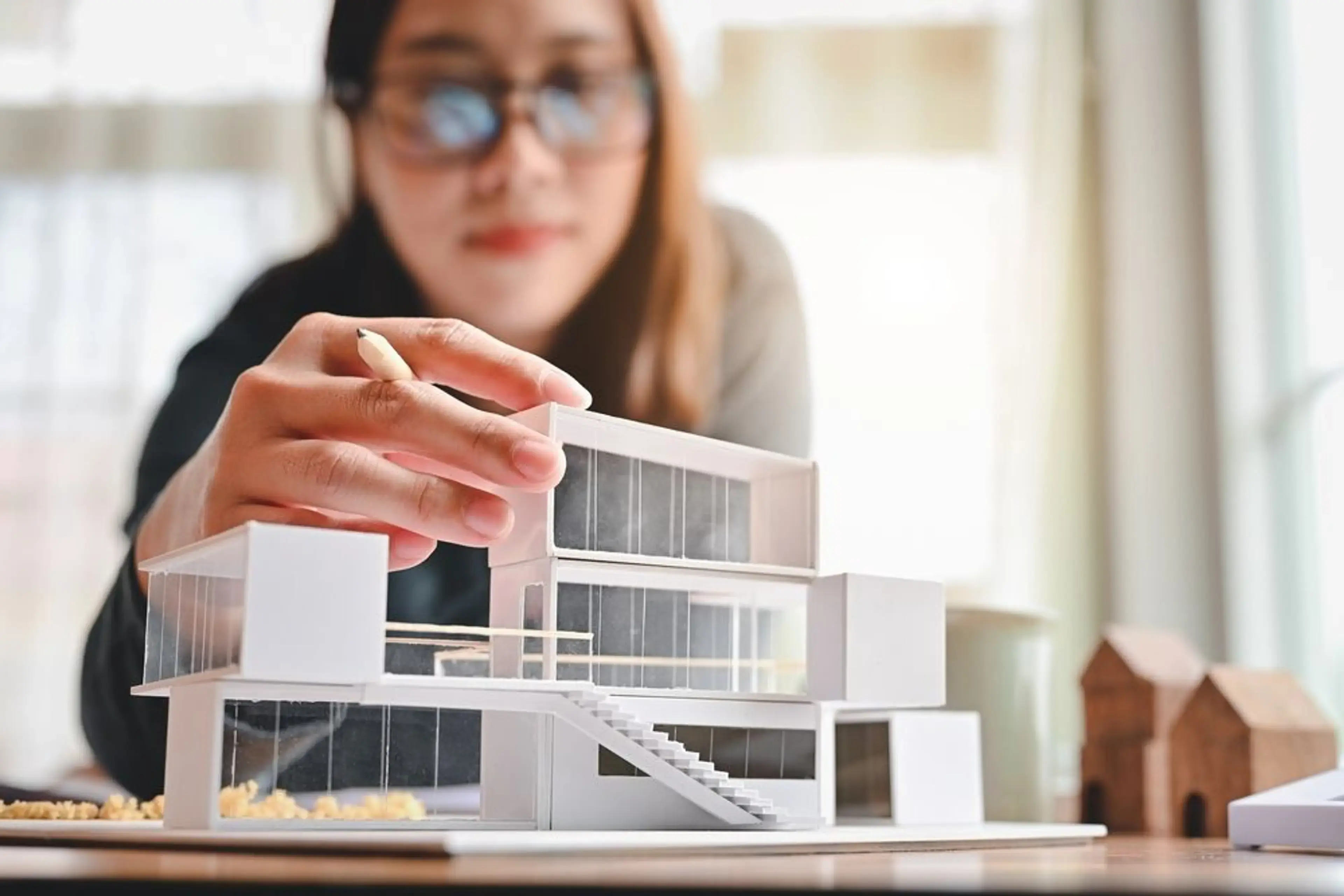Architect Marketing Strategies to Engage Premium Clients
Architect Marketing Strategies to Engage Premium Clients
Blog Article
Recognizing the Diverse Profession Paths Available for Aspiring Architect
As an aspiring Architect, you have a globe of occupation paths waiting for you. Whether you're drawn to standard architecture or the nuances of lasting layout, there's a particular niche that aligns with your rate of interests.
Standard Style: Designing Structures and buildings
Conventional architecture concentrates on developing buildings and structures that mix functionality with visual allure. As you explore this field, you'll value the elaborate equilibrium in between kind and objective. You'll learn to draw ideas from historic designs, including elements like balance, products, and workmanship. Your layouts can mirror cultural heritage, showcasing local customs while satisfying modern-day demands.
You'll establish skills in preparing, model-making, and website analysis, allowing you to imagine and interact your concepts properly. Involving with clients, you'll require to recognize their vision and convert it into feasible designs.
In addition, constructing codes and sustainability practices are vital in your job, ensuring your structures are safe and eco-friendly. As you expand in your occupation, you'll locate opportunities in property, commercial, or also reconstruction projects, each offering special difficulties. Embracing traditional architecture leads the way for a fulfilling occupation that admires the past while forming the future.
Urban Planning: Shaping Neighborhoods and Public Spaces
As an ambitious Architect, you can play a crucial role as a metropolitan organizer, transforming just how areas communicate and function. By employing community interaction methods, you'll ensure that locals have a voice in shaping their setting. And also, integrating lasting design concepts will aid produce areas that not only fulfill today's needs however likewise shield the future.
Function of Urban Planners
While numerous may consider designers as the sole dreamers behind buildings, city organizers play a crucial duty fit the broader landscape of communities and public spaces. They evaluate land use, zoning regulations, and neighborhood needs to develop lasting environments that boost lifestyle. By teaming up with various stakeholders, you'll assist create parks, transportation systems, and houses that promote social communication and accessibility. Urban organizers also focus on ecological factors to consider, guaranteeing that growths integrate green rooms and support biodiversity. Your know-how in spatial layout and area dynamics allows you to picture future growth while protecting social heritage. In this vital role, you'll straight affect just how people experience their environments, making every job an opportunity for favorable adjustment.
Community Engagement Techniques
Reliable community interaction techniques are essential for urban organizers to assure that the voices of citizens are heard and valued in the preparation process. To cultivate purposeful dialogue, you must prioritize open online forums and workshops where area members can express their ideas and issues. By actively paying attention and including feedback, you'll create areas that reflect the area's needs, ultimately leading to more successful and sustainable metropolitan environments.
Lasting Design Concepts
When making urban spaces, integrating lasting design principles is essential for creating settings that thrive both ecologically and socially. Take into consideration incorporating eco-friendly spaces, like gardens and parks, to boost biodiversity and improve air high quality.
Creating with water conservation in mind is also key-- assume regarding rain gardens and absorptive surfaces to manage stormwater. Entailing area members throughout the planning procedure assurances that the rooms you produce satisfy their needs and encourage social communication. By embracing these principles, you'll add to lively, lasting city landscapes that profit everybody.

Landscape Architecture: Developing Lasting Outside Settings
As you check out landscape design, you'll find crucial style concepts that create attractive and useful outdoor areas. Lasting practices play a crucial function in guaranteeing these settings thrive while minimizing ecological influence. And also, you'll find a selection of occupation opportunities that allow you to make a real distinction in how individuals engage with nature.
Style Concepts in Landscape
Understanding design concepts in landscape design is necessary for creating lasting outdoor atmospheres that balance with nature. You'll need to consider elements like percentage, range, and balance to assure your layouts feel natural and inviting. Including native plants not just improves biodiversity yet additionally minimizes water usage, making your landscape resistant. Assume concerning the circulation of space and exactly how individuals connect with it; paths and seating locations must invite expedition and relaxation. Additionally, pay attention to seasonal modifications, creating with materials that match the surroundings year-round (Architect). By prioritizing sustainability and aesthetic appeals, you can develop exterior areas that enrich the area and promote wellness. Welcoming these concepts will set a solid foundation for your job in landscape architecture.
Lasting Practices Review
Lasting techniques in landscape architecture not just concentrate on appearances however also focus on eco-friendly health and wellness and source preservation. By incorporating native plants, you improve biodiversity and minimize the demand for chemical plant foods and pesticides. Applying effective watering systems aids preserve water and decreases runoff, shielding neighboring communities. You can make spaces that advertise dirt health, such as exercising and using organic products permaculture concepts. Furthermore, including environment-friendly facilities, like rain gardens and porous pavements, help in stormwater monitoring and minimizes urban warm. You contribute to a much healthier earth and offer areas that cultivate community connection when you produce outside environments with sustainability in mind. Ultimately, these techniques assure your styles profit both people and the setting for many years to find.
Profession Opportunities Exploration
With a solid foundation in lasting methods, landscape style uses a selection of career paths that enable you to make a significant influence on the setting. Urban organizers commonly team up with landscape designers to create eco-friendly spaces in city settings, boosting city livability. If you're passionate concerning education and learning, take into consideration coming to be a landscape architecture educator, motivating future generations.
Lasting Style: Concentrating On Eco-Friendly Practices
As you explore your job in style, embracing environment-friendly techniques can set you apart in a competitive area. Sustainable design focuses on producing structures that lessen ecological influence while enhancing owner wellness. By including renewable products, energy-efficient systems, and lasting structure strategies, you'll add to a greener future.
Start by acquiring knowledge of eco-friendly certifications like LEED or BREEAM, which can reinforce your qualifications. Consider just how natural light, ventilation, and thermal performance can optimize style. Collaborate with engineers and environmental professionals to innovate options that decrease waste and preserve sources.
Do not fail to remember the significance of area involvement-- engaging regional stakeholders can motivate designs that balance with the environment. As clients significantly prioritize sustainability, your knowledge in environmentally friendly methods will not only attract tasks however likewise fulfill your enthusiasm for accountable architecture. Embrace this vital element of the profession, and enjoy your career grow.
Historic Conservation: Protecting and Bring Back Cultural Heritage
While you start on your building trip, consider the crucial role of historical preservation in keeping our social heritage. This field concentrates on the defense and restoration of significant buildings, websites, and frameworks that inform the stories of our past. By involving in historical preservation, you'll help guard the architectural tradition that shapes neighborhood identity.
As a historic conservation Architect, you'll assess historical value and examine the problem of frameworks. You'll function closely with historians and preservationists to assure authentic reconstruction methods are used. This profession path allows you to blend creativity with research study, allowing you to develop services that value original materials and workmanship.
Your job not just adds to sustainability by reusing existing structures yet likewise cultivates a sense of satisfaction within areas. Embracing this path will assist you become a guardian of background, maintaining the tales and aesthetic appeals that improve our lives.
Inside Design: Enhancing Indoor Spaces
Historical preservation and interior get more info style both share a dedication to boosting the constructed environment, however they concentrate on different aspects. While historical preservation highlights keeping a structure's historical and cultural value, indoor style nos in on maximizing indoor areas for functionality and appearances.
As an ambitious Architect, you'll locate that indoor architecture permits you to mix creative thinking with technical skills. You'll design areas that not only look good but additionally promote convenience and performance. This area entails recognizing how light, shade, and materials communicate within a space, impacting state of mind and functionality.
You'll work with numerous tasks, from household homes to industrial offices, making sure that each setting meets the needs of its passengers. By prioritizing user experience, you can change interiors right into inspiring and useful rooms, making a considerable influence on just how people connect with their surroundings. Embrace the possibility to enhance indoor atmospheres and shape the method individuals work and live.
Industrial Layout: Merging Capability With Aesthetic Appeals
Industrial layout plays an essential Architect role in producing products that seamlessly blend appearances with functionality, making certain that what you utilize day-to-day is not just visually attractive yet likewise functional. As a hopeful Architect, you might involve on your own in this field, concentrating on creating everything from furnishings to consumer electronics. Your work includes recognizing user demands, products, and manufacturing processes, allowing you to develop innovative services that boost everyday experiences.
In commercial design, you'll typically work together with engineers, makers, and marketing professionals, ensuring that your layouts are not only beautiful but additionally viable. You'll learn to balance kind and function, focusing on functionality without compromising style. By refining your abilities in mapping out, 3D modeling, and prototyping, you'll be fully equipped to bring your ideas to life. This occupation path supplies a vibrant setting where creativity satisfies functionality, making it a satisfying choice for engineers interested in forming the products of tomorrow.
Frequently Asked Concerns
What Educational Qualifications Do I Need to End Up Being a Designer?
To come to be an architect, you'll need a specialist level in design, commonly a Bachelor's or Master's. Furthermore, you'll have to complete a teaching fellowship and pass the Architect Registration Exam to practice legally.
Exist Accreditation Demands for Different Building Profession Paths?
Yes, there're accreditation requirements for different architectural courses. Architect. You'll need to pass examinations, full internships, and often go after specialized training, depending on your picked emphasis, like landscape architecture, city style, or historic conservation
What Software Abilities Are Important for Designers Today?

Just How Can I Gain Practical Experience While Researching Architecture?
You can obtain sensible experience by interning at building companies, joining layout competitions, offering for community tasks, or collaborating with classmates on real-world assignments. These possibilities improve your skills and construct beneficial links in the industry.
What Task Opportunities Exist Outside Traditional Style Firms?
You can check out numerous work chances outside standard architecture firms, like city preparation, interior decoration, landscape style, construction monitoring, property development, or perhaps duties in sustainability consulting. Each deals one-of-a-kind difficulties and benefits.
Whether you're attracted to traditional design or the nuances of sustainable style, there's a niche that lines up with your interests.When making city rooms, integrating lasting design concepts is vital for producing atmospheres that prosper both ecologically and socially.As you discover landscape architecture, you'll check here uncover necessary layout principles that create attractive and practical outside areas.Comprehending layout concepts in landscape architecture is essential for developing lasting outside settings that balance with nature.In industrial design, you'll usually work together with marketers, suppliers, and engineers, making sure that your styles are not only stunning but likewise feasible.
Report this page